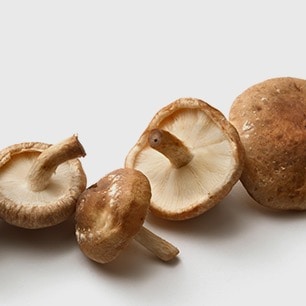Published October 1, 2022
What are adaptogens?
Adaptogens are unique plants with active ingredients that may be beneficial to the body. The most common adaptogens are herbs and mushrooms. Use of adaptogens began to gain traction after World War II, when soldiers used certain plants to help physical and mental performance.1 The first studies on the effects of schisandra (more on that below) were published in WWII—era military journals. Research was then extended to discover other plants that may have similar effects. The term adaptogen was introduced in the 1940s by Dr. Nikolai Lazarev.2 It was found that certain plants have an impact on the body’s stress response by aiding it to “adapt” to what the body needs in a stressful environment. Researchers have several criteria for an herb to be classified as an adaptogen, including that it cannot be toxic or harmful and that it helps the body normalize and regulate the stress system back to balance (homeostasis).3 If not regulated, stress could cause an imbalance, which, if prolonged, could affect your health.

How do adaptogens work?
There are many mechanisms of adaptogens that are not all fully understood, but we do know they influence the body’s response to stress by supporting the adrenal glands, hormones, and brain functions.1 For example, suppose you walk outside to check the mail and see a lion in your yard. A normal response is for your body to pump the hormone cortisol and get you ready to run!
Our body perceives stress the same way in everyday situations, from meeting deadlines, public speaking, and sports competitions. This triggers the same stress reaction you had with the lion. This is a normal, healthy stress response to get you out of harm’s way. It’s when this response gets "stuck” and the threat continues to be perceived that we develop a high level of cortisol.
This is where adaptogens are thought to help the body with this imbalance. Adaptogens have been used to regulate the body back to its balance, or what’s called homeostasis. Adaptogens may do this by acting on the body’s hypothalamic-pituitary-adrenal (HPA) axis. Simply put, the HPA axis is our body’s stress “home base,” where stress operations or activities are carried out. The HPA axis regulates and releases cortisol. There are also incidents where someone could have very low levels of cortisol. This is also an imbalance. Adaptogens work on both extremes. Let’s go over some of the most common adaptogens.
Common adaptogens.
- Ashwagandha: Known for its horse-like smell, this adaptogen has been used in Eastern medicine for years to relieve stress and improve concentration.4 Ashwagandha is considered a “calming” adaptogen, as studies have shown it may have the potential to ease stress and reduce anxiety.5, 6 Have you tried our new GreenWise ashwagandha supplement?
- Tulsi: Also known as holy basil, tulsi is part of the mint family and is often referred to as the “queen of herbs” for providing a broad spectrum of health-supporting benefits.7 It may even have antibacterial and antiviral properties! It has traditionally been used for treating mosquito bites, snake bites, and malaria,7 and is most often used in combination with ashwagandha. Some research suggests that it may have a supporting role in alleviating stress, anxiety, and depression.7
- Schisandra: This bright red berry may support stamina and energy production. Schisandra does this by activating the secretion of cortisol.8 Research has also focused on its role in liver function and its potential effect on certain liver toxicities.9
- Adaptogenic mushrooms: Reishi, chaga, and cordyceps have been used for medicinal purposes in traditional Eastern medicine. These mushrooms contain bioactive compounds such as beta-glucans. Beta-glucans are soluble fibers that may support the immune system.10 They also contain triterpenoids, which are phytochemicals found in plants that may have anti-inflammatory and antioxidant properties as well as ergosterol, which is a precursor to vitamin D3 when the mushroom is exposed to ultraviolet light.10 Like all mushrooms, they contain carbohydrates that act as prebiotics, which are fibers that help support a healthy gut microbiome.11
- Secondary adaptogens: Some adaptogens are considered “secondary” because they do not influence one’s HPA axis directly like the primary ones mentioned above.10 Turmeric, maca, and goji berries, which may already be in your pantry, are secondary adaptogens that may support the immune, nervous, and hormone systems.8 Try this smoothie with maca powder.
In 1988, the Food and Drug Administration (FDA) defined adaptogens as “a new kind of metabolic regulator that has proved to help in environmental adaptation and to prevent external harms.”12 It is important to keep in mind that adaptogens are considered dietary supplements, which are not FDA-approved. Adaptogens are available in powders, capsules, teas, tinctures, and soups. The different sources have different concentrations and potencies. Although they can be consumed individually, most practitioners use adaptogens in combination with one another to create a synergistic effect. As always, it’s good to exercise caution when taking any supplement, especially if you are pregnant, planning to become pregnant, or currently taking medications. Always consult your healthcare provider before starting any new dietary supplement regimen.
For the love of you.
Choosing how you eat is uniquely personal. It’s about your needs, your preferences, and your goals. As your wellness ally, we’re in your corner with fresh ideas, recipes, and wellness icons that make it easier to shift toward wiser food choices. It’s all about you, at your very best.
Sources
1 Panossian, Alexander, and Georg Wikman. Effects of Adaptogens on the Central Nervous System and the Molecular Mechanisms Associated with Their Stress — Protective Activity. Pharmaceuticals 3, no. 1 (January 19, 2010): 188–224.
2 Todorova, Velislava, Kalin Ivanov, and Stanislava Ivanova. Comparison Between the Biological Active Compounds in Plants with Adaptogenic Properties (Rhaponticum carthamoides, Lepidium meyenii, Eleutherococcus senticosus, and Panax ginseng). Plants 11, no. 1 (December 26, 2021): 64.
3 Panossian, Alexander, Thomas Efforth, Alexander N. Shikov, Olga N. Pozharitskaya, et al. Evolution of the Adaptogenic Concept from Traditional Use to Medical Systems: Pharmacology of Stress- and Aging-Related Diseases. Medicinal Research Reviews 41, no. 1 (January 2021): 630-703.
4 Amidor, Toby, MS, RD, CDN. Ask the Expert: Ashwagandha Supplementation. Today's Dietitian 21, no. 4 (April 2019): 8.
5 Salve, Jaysing, Sucheta Pate, Khokan Debnath, and Deepak Langade. Adaptogenic and Anxiolytic Effects of Ashwagandha Root Extract in Healthy Adults: A Double-Blind, Randomized, Placebo-Controlled Clinical Study. Cureus 11, no. 12 (December 25, 2019): e6466.
6 Pacheco, Danielle. Ashwagandha for Sleep. Sleep Foundation. April 18, 2021.
7 Cohen, Marc Maurice. Tulsi – Ocimum sanctum: A Herb for All Reasons. Journal of Ayurveda and Integrative Medicine 5, no. 4 (Fall/Winter 2014): 251-59.
8 Liao, Lian-ying, Yi-fan He, Li Li, Hong Meng, et al. A Preliminary Review of Studies on Adaptogens: Comparison of Their Bioactivity in TCM with That of Ginseng-Like Herbs Used Worldwide. Chinese Medicine 13, no. 57 (November 16, 2018).
9 Xu, Jin-Biao, Guang-Chun Gao, Ming-Jing Yuan, Xuan Huang, et al. Lignans from Schisandra chinensis Ameliorate Alcohol and CCl 4-Induced Long-Term Liver Injury and Reduce Hepatocellular Degeneration via Blocking ETBR. Journal of Ethnopharmacology 258 (August 10, 2020): 112813.
10 Dennett, Carrie, MPH, RDN, CD. Medicinal Mushrooms — An Exploration of Their Purported Health Benefits in the Form of Powders and Liquid Extracts. Today's Dietitian 23, no. 3 (March 2021): 20.
11 Jayachandran, Muthukumaran, Jianbo Xiao, and Baojun Xu. A Critical Review on Health Promoting Benefits of Edible Mushrooms Through Gut Microbiota. International Journal of Molecular Sciences 18, no. 9 (September 2017): 1934.
12 Retelny, Vicki Shanta, RDN. Botanicals/Herbs: Adaptogens. Today's Dietitian 22, no. 7 (August/September 2020): 14.

 You are about to leave publix.com and enter the Instacart site that they operate and control. Publix’s delivery and curbside pickup item prices are higher than item prices in physical store locations. Prices are based on data collected in store and are subject to delays and errors. Fees, tips & taxes may apply. Subject to terms & availability. Publix Liquors orders cannot be combined with grocery delivery. Drink Responsibly. Be 21. For prescription delivery, log in to your pharmacy account by using the Publix Pharmacy app or visiting
You are about to leave publix.com and enter the Instacart site that they operate and control. Publix’s delivery and curbside pickup item prices are higher than item prices in physical store locations. Prices are based on data collected in store and are subject to delays and errors. Fees, tips & taxes may apply. Subject to terms & availability. Publix Liquors orders cannot be combined with grocery delivery. Drink Responsibly. Be 21. For prescription delivery, log in to your pharmacy account by using the Publix Pharmacy app or visiting 
